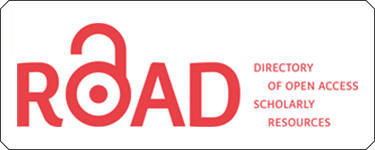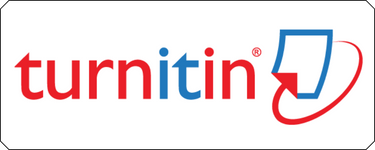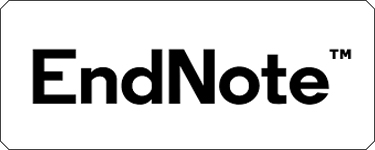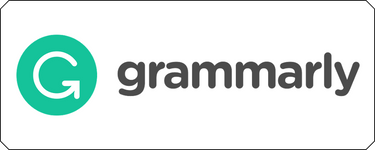Online Submissions
Registration and login are required to submit items online and to check the status of current submissions.
Author Guidelines
Authors who wish to submit articles must send them via system and it is free of charge. Here are the guidelines for writing the manuscripts (kindly check the journal template):
1. Manuscript Title and Author Information
- The article title must contain a maximum of 15 words, formatted in Cambria 14 pt, bold, with each word capitalized and aligned to the left.
- Author names should follow the format: First Name, Middle Initial(s), and Last Name. Use The Hand Extrablack 14 pt, bold, left-aligned.
- Author affiliations must include: department, faculty, university, city, and country, using Cambria 8 pt, single-spaced, left-aligned.
- The corresponding author should be marked with an asterisk (*) and an email address must be provided.
2. Keywords
- Include 3 to 5 keywords or phrases in alphabetical order.
- Present both in English (Keywords) and Indonesian (Kata kunci), separated by commas.
3. Abstract and Abstrak
- The abstract (in English) must not exceed 200 words, written in Cambria 9 pt. It should briefly describe the research problem, aim, method, findings, and conclusion in one paragraph.
- The abstrak (in Indonesian) must mirror the abstract content, also written in Cambria 9 pt, maximum 200 words, in one paragraph.
4. Manuscript Length and Structure
- The main body of the manuscript (from Introduction to Conclusion) should be 4,000–6,000 words or approximately 18–19 pages.
- Use Cambria 12 pt, 1.15 spacing throughout the text.
- The manuscript must include the following sections:
- Introduction: Clearly state the research objectives, background, significance, theoretical contribution, and research gap.
- Method: Describe the rationale for the selected methodology and demonstrate the validity and reliability of the research.
- Findings and Discussion: Present research results supported by theoretical analysis. Tables and figures must be numbered, labeled, and formatted with minimal borders (no vertical lines, only necessary horizontal lines). Each figure/table should take up no more than two-thirds of a page.
- Conclusion: Provide a synthesis of findings, answer research questions, and suggest future directions without merely restating previous sections.
5. Citation and References
- Use APA 7th edition citation style.
- References must be listed alphabetically using Cambria 12 pt, single-spaced.
- A minimum of 25–50 references is required, with 40–80% sourced from reputable international journals.
- It is recommended that references come from the last 5–10 years, except for seminal works.
- Authors are encouraged to use reference management tools such as Mendeley, Zotero, Endnote, etc.
- Examples:
- Article with DOI: Budiyanto, C., Prananto, A., & Tan, F. T. C. (2019). Designing embedded case study research approach in educational research. International Journal of Pedagogy and Teacher Education, 3(1), 1–18. https://doi.org/10.20961/ijpte.v3i1.15002
- Book: Rai MK, Carpinella C. 2006. Naturally Occurring Bioactive Compounds. Elsevier, Amsterdam.
- Book Chapter: Webb CO, Cannon CH, Davies SJ. 2008. Ecological organization, biogeography, and the phylogenetic structure of rainforest tree communities. In: Carson W, Schnitzer S (eds). Tropical Forest Community Ecology. Wiley-Blackwell, New York.
- Abstract: Assaeed AM. 2007. Seed production and dispersal of Rhazya stricta. The 50th Annual Symposium of the International Association for Vegetation Science, Swansea, UK, 23-27 July 2007.
- Proceeding: Duckworth, A. L., Quirk, A., Gallop, R., Hoyle, R. H., Kelly, D. R., & Matthews, M. D. (2019). Cognitive and noncognitive predictors of success. Proceedings of the National Academy of Sciences, USA, 116(47), 23499–23504. https://doi.org/10.1073/pnas.1910510116
- Thesis, Dissertation: Sugiyarto. 2004. Soil Macro-invertebrates Diversity and Inter-cropping Plants Productivity in Agroforestry System based on Sengon. [Dissertation]. Brawijaya University, Malang. [Indonesian]
- Online document: Balagadde FK, Song H, Ozaki J, Collins CH, Barnet M, Arnold FH, Quake SR, You L. 2008. A synthetic Escherichia coli predator-prey ecosystem. Mol Syst Biol 4: 187. DOI: 10.1038/msb.2008.24
6. Peer Review and Publication Ethics
- The journal follows a double-blind peer-review process; both authors’ and reviewers’ identities are concealed.
- All submissions will be reviewed by at least two independent reviewers.
- The editorial team will notify the corresponding author of the submission status within 2–4 weeks.
7. Publication Format and Open Access
- The journal is published in open-access format under a Creative Commons BY-SA license.
- No submission fee is required during the initial submission phase.
Submission Preparation Checklist
As part of the submission process, authors are required to check off their submission's compliance with all of the following items, and submissions may be returned to authors that do not adhere to these guidelines.
- The submission has not been previously published, nor is it before another journal for consideration (or an explanation has been provided in Comments to the Editor).
- The submission file is in OpenOffice, Microsoft Word, RTF, or WordPerfect document file format.
- Where available, URLs for the references have been provided.
Copyright Notice

Translation and Linguistics (Transling) is licensed under a Creative Commons Attribution-ShareAlike 4.0 International License
Copyright Notice
An author who publishes in Translation and Linguistics (Transling) agrees to the following terms:
- Author retains the copyright and grants the journal the right of first publication of the work simultaneously licensed under the Creative Commons Attribution-ShareAlike 4.0 License that allows others to share the work with an acknowledgment of the work's authorship and initial publication in this journal
- Author is able to enter into separate, additional contractual arrangements for the non-exclusive distribution of the journal's published version of the work (e.g., post it to an institutional repository or publish it in a book) with the acknowledgment of its initial publication in this journal.
- Author is permitted and encouraged to post his/her work online (e.g., in institutional repositories or on their website) prior to and during the submission process, as it can lead to productive exchanges, as well as earlier and greater citation of the published work (See The Effect of Open Access).
Read more about the Creative Commons Attribution-ShareAlike 4.0 Licence here: https://creativecommons.org/licenses/by-sa/4.0/.
Author Fees
This journal charges the following author fees.
: 0.00 (IDR)
Every article submitted to the editorial office of the Translation and Linguistics (Transling) is free of charge (free - no page charge) including free article processing fees.














